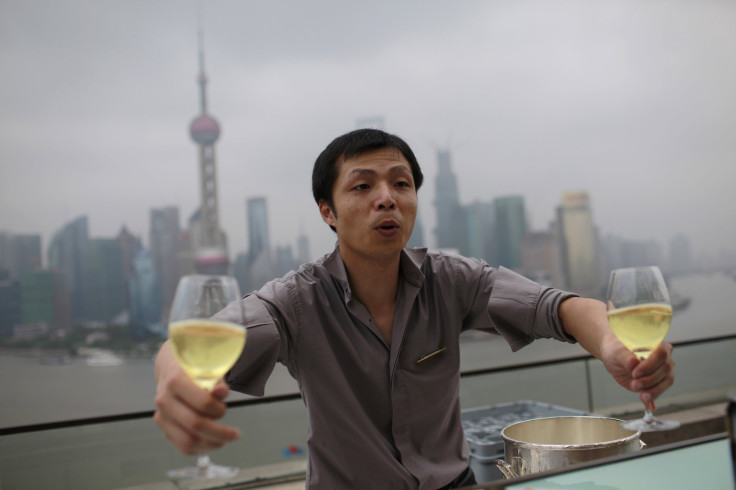French Wine Labels Such As LVMH Moet Hennessy Louis Vuitton SA (LVMH) Are Investing In China

Against the backdrop of Beijing’s allegations against European wine dumping, renowned French labels such as Chateau Lafite-Rothschild and Dom Perignon champagne are investing millions of dollars in rural China, in the hopes of producing vintages that will finally put Chinese wine on the world map.
China’s domestic wine industry has thus far been defined by cheap, poor-quality wines and overpriced mediocre wines, but the French are now partnering with Chinese investors to produce super-premium wines for the increasingly discerning drinkers at the top end of China’s expanding wine-consuming segment, according to Reuters.
The bottles from the French winemakers could go for hundreds of dollars when they appear in a year or two. The companies are hoping to appeal to wealthy Chinese drinkers with local vintages that are equal to their imported counterparts.
"China deserves the production of great wines," said Christophe Salin, president of Domaines Barons de Rothschild (DBR), which owns the vaunted Chateau Lafite, Ch. Duhart-Milon and Ch. L'Evangile, among other French labels, according to Reuters. "Without wanting to copy Lafite, we wish to produce a great wine on Chinese soil," he added in an interview.
DBR is investing 100 million yuan ($16.3 million) with CITIC, a state investment firm, to develop 25 hectares (62 acres) of vineyards in eastern Shandong province to produce super-premium red wine.
Moet-Hennessy, the wine and spirits group of luxury corporation LVMH Moet Hennessy Louis Vuitton SA (BIT:LVMH), is also planting 30 hectares of grapes in the remote mountainous regions, known as Shangri-La, in southern Yunnan province. The group studied climate and soil conditions at hundreds of locations around China before settling on the area to grow grapes for Cabernet sauvignon, Cabernet franc, and Merlot. Two-thirds of the investment in the venture came from Moet-Hennessy, the rest from its Chinese partner, winemaker VATS.
"I dream one day to go back to France with a bottle of red wine produced in the region of Shangri-La and I can say it's the best wine in the world," said Christophe Navarre last year when announcing the venture.
Both DBR and Moet-Hennessy plan to give their Chinese wines a unique Chinese identity, and not market them under existing brands. The strategy is questioned by some within the Chinese wine industry.
"If they don't put their brand on it then people won't buy it at a very high price," says Monica He, who works with wine importer Menvis in Beijing.
This line of reasoning is consistent with Chinese consumers’ passion for western luxury brands, while domestic luxury companies have found it difficult to appeal to wealthy Chinese.
DBR and LVMH investments in China aim to capitalize on China’s growing thirst for premium wine. China is currently the world’s fifth-largest wine consumer, according to a study last year for WINEXPO, an annual wine trade show that alternates between Bordeaux and Hong Kong. The study projected the annual consumption growth in China and Hong Kong to be 54.3 percent between 2011 and 2015, the equivalent of a billion more bottles every year, according to Reuters.
China’s recent anti-corruption measures may prove a deterrence to the French winemakers’ expansion into the country, however. Luxury spending has been on a decline since the announcement of President Xi Jinping’s austerity plan in December. During Chinese New Year this year, luxury spending dropped 53 percent compared to the same period in 2012.
© Copyright IBTimes 2025. All rights reserved.





















